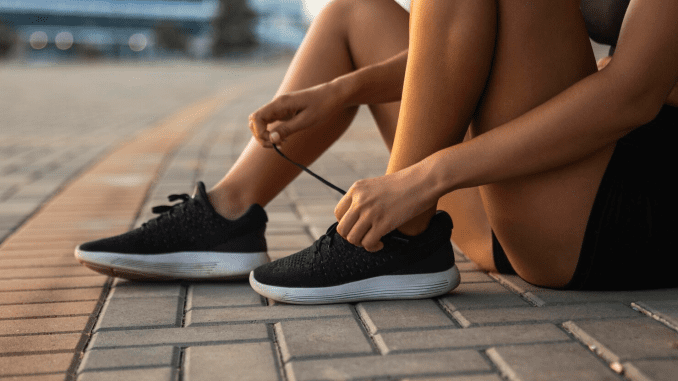
When working out, it’s crucial to wear the appropriate gym attire. However, what about shoes? Have you ever considered this?
You can be unintentionally committing a lot of blunders, such as wearing loose or poorly fitting clothing during strenuous training sessions or going for a walk in your everyday house slippers.
Wearing the Wrong Shoes Could Result in Harm.
When working out, most people make the mistake of wearing the incorrect kind of footwear. Not only may improper gym attire or footwear raise the risk of injury during exercise, but it can also make training boring. Numerous conditions could occur, including plantar fasciitis, achilles tendonitis, shin splints, leg sprains, and twisted ankles.
The appropriate footwear can improve the quality of your workout.
Wearing appropriate footwear is crucial. Choosing the appropriate shoes to wear might also improve your performance.
According to some experts, choosing the appropriate shoes for your workout is almost as crucial as the workout itself. This is due to the fact that the majority of your activities target key leg muscle groups, and wearing the wrong shoes could cause serious harm.
It’s crucial to keep in mind that your shoe selection should complement your exercise regimen rather than work against it. This implies that not every pair of running shoes is appropriate for usage in a gym. In the same way, specific training shoes are needed for long-distance hiking. Make sure your footwear completely supports the exercise you intend to perform while selecting the appropriate pair. Otherwise, wearing shoes meant for a different activity could result in foot injuries. Before choosing, you should confirm the following fundamentals:
Select the Appropriate Size
You will employ your body’s core muscular groups during exercise, which calls for the proper kind of support. It could be dangerous to wear shoes that are one size too big or too tiny. Make sure comfort comes first, not the shoe’s color or style. Fit the shoes’ breadth, length, and form to your own foot. A strong grip should also be a feature of the perfect shoe.
Another clever shopping tip to help you select the correct size is to put on your shoes later in the day, when your feet are more likely to swell up a bit. Another piece of advice is to try the shoes on with socks on. This would give you a more accurate impression of how the shoes will fit you throughout exercise.
Make Sure the Shoes Fit Properly.
Determining your foot’s arch shape may also be helpful in selecting the appropriate shoe. For optimal fit, make sure your longest toe and the front of the shoe are separated by a thumb’s width.
Put the shoes away if you’re uncomfortable in the slightest. It may need many thoughtful attempts and investigation, but it will spare you the headache of getting hurt.
Assess the Requirements for Your Exercise.
varied workouts and exercises have varied designs and methods of execution. Running, for instance, demands a different type of footwork than any other indoor activity that is moderately or highly intense, like circuit training. Therefore, when you go shoe shopping, it’s crucial to keep in mind your fitness requirements as well.
Analyze the Shoe’s Construction.
A shoe is made up of four main components: the heel rise, padding, the sole and tread that contact the ground, and the sole. Each of these serves a crucial purpose. The type of exercise you perform will determine what kind of functions you need to seek for. Adequate cushioning is required for comfort, even if the tread sections and soles aid in preventing falls and providing essential traction with the base surface. When you move, the heel of the shoe supports your forward motion. Try on various pairs to see which style provides the most support without limiting your range of motion.
You can select from a wide range of shoes that are ideal for your training based on these. Making the best decision would also be assisted by a qualified expert.
Although these are some of the fundamental tests you should be doing, the following shoe styles are the most functional:
If You Go for Walks
Walking is a low-impact workout with a lesser risk of injury than other exercises, so you don’t need additional heel support or cushioning. Try to acquire some simple, fitting shoes that will allow your feet to move naturally.
If You Choose to Jog or Run
Cushion support that can sustain force and support movement as you propel your feet forward is necessary for running or high-sprinted walking. You can also find a range of shoe designs that accommodate various running styles if you search.
If You Decide to Undertake Cardio Workouts Indoors
Depending on the intensity of your workout, you have a variety of options because indoor activities don’t require the same traction or groove on the soles as outside sports do. It is sufficient to provide a basic level of cushion support. Choose shoes that both suit your needs and the way you move.
Leave a Reply